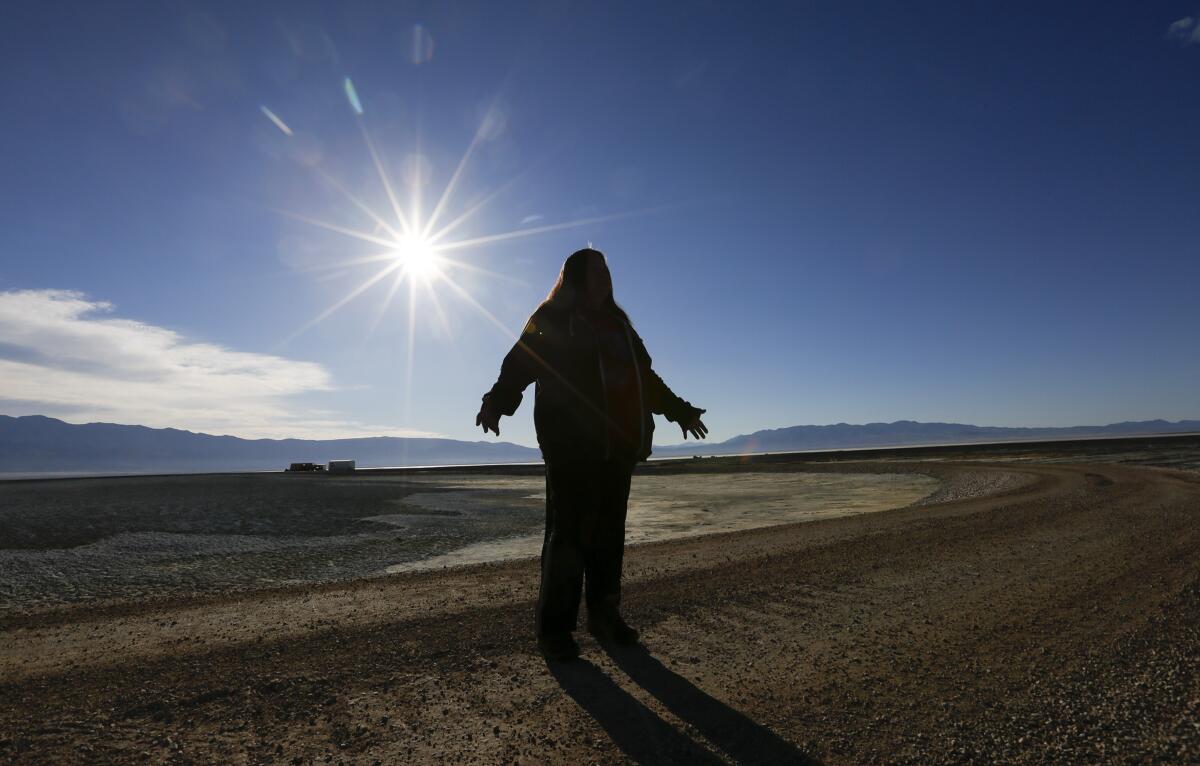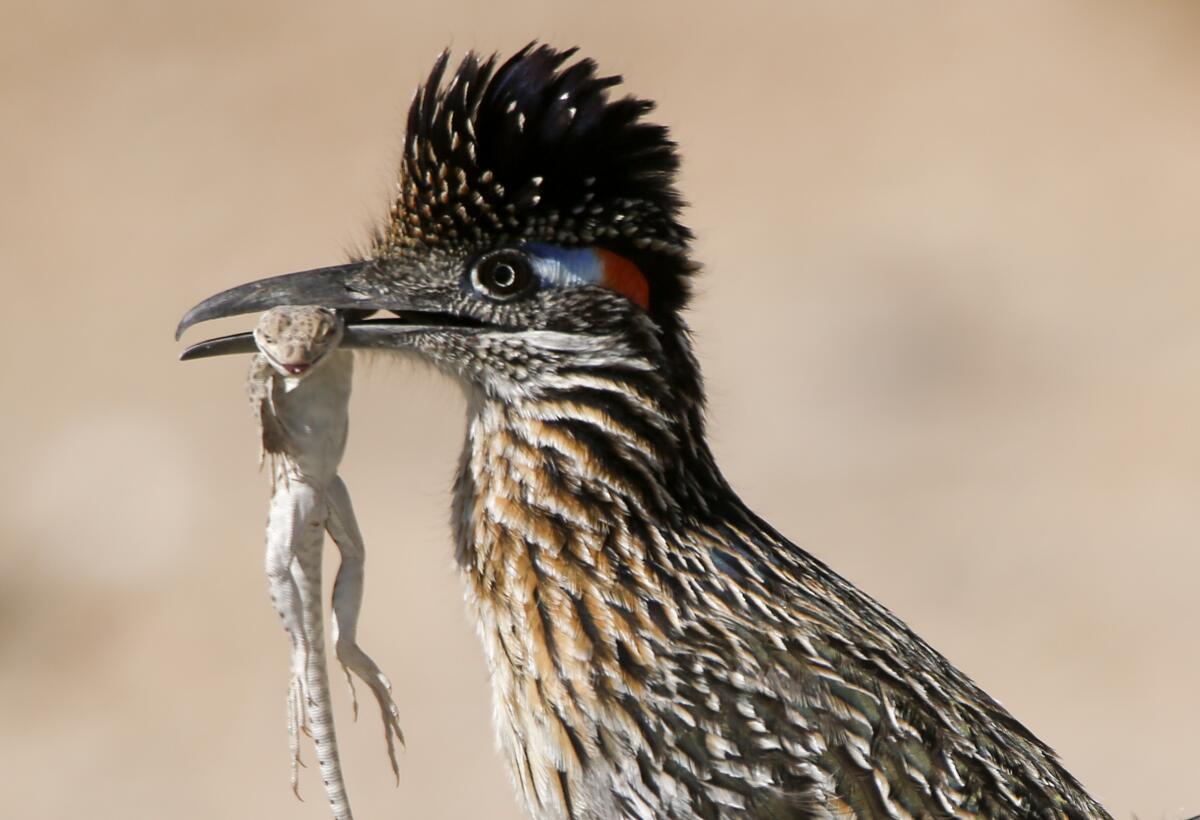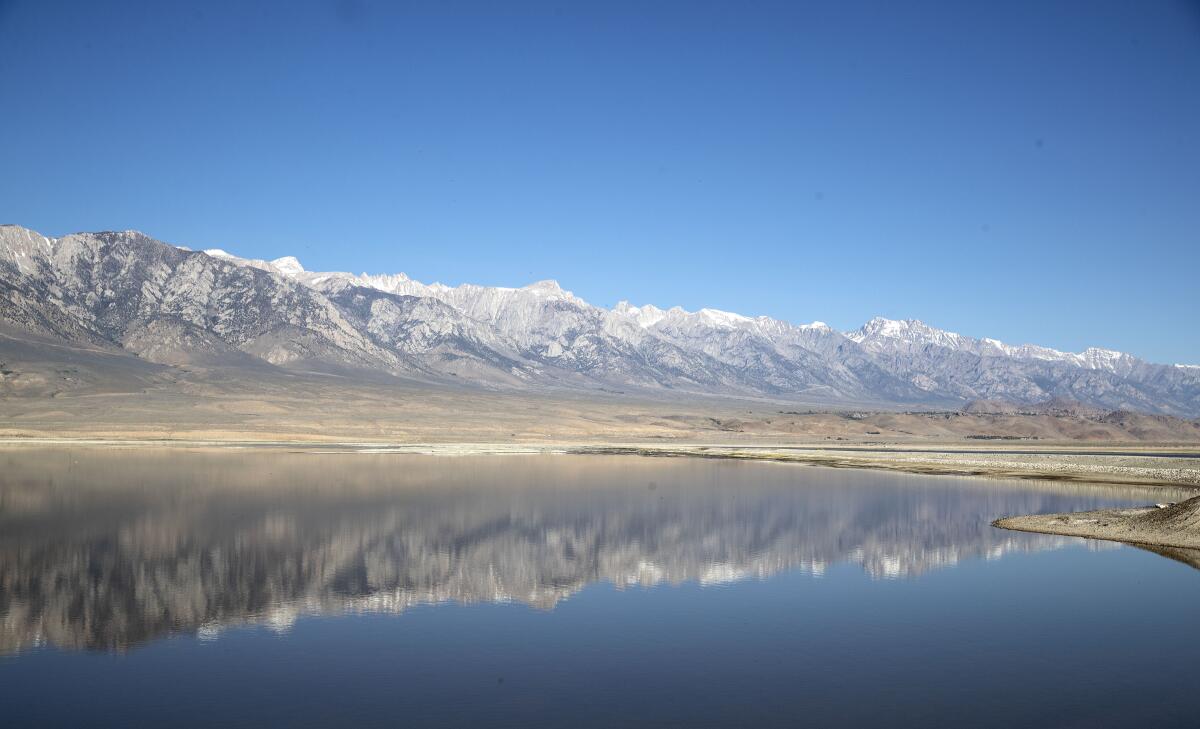Owens Valley tribes honor a legacy of ‘beauty and suffering’ with historic site nomination

OLANCHA, Calif. — Spirits live here. That’s what Paiute and Shoshone tribal members say about the Owens Lake playa, an arid, eerily flat expanse along the eastern Sierra Nevada range that is prone to choking dust storms.
It is best known as the focal point of a historic feud that began in the early 1900s, when Los Angeles city agents quietly bought up ranch lands and water rights for an aqueduct to quench the thirst of the growing metropolis 200 miles to the south.
L.A. diverted so much water via the aqueduct system that the 110-square-mile lake dried up and it was nearly impossible for local farmers and ranchers to make a living — a scandal dramatized in the classic 1974 film “Chinatown.”
But a different history looms over this wasteland for Native Americans whose ancestors knew it as a kingdom of irrigated villages and plentiful game until the late 1800s — before U.S. troops were sent to protect local white settlers and the land and water they had effectively stolen.
Now, as part of an effort to present a fuller picture of the region’s importance to the Indigenous people of Owens Valley, five local tribes have nominated 186 square miles of the lakebed for listing in the California Register of Historical Resources and in the National Register of Historic Places.

The nomination brought a sense of hope to Danelle Bacoch-Gutierrez, of the Big Pine Paiute Tribe of Owens Valley. As she gazed out across the $2.5 billion worth of dust control projects L.A. has installed across the lakebed over the past three decades, Bacoch-Gutierrez said she has long prayed for guidance in preserving her people’s heritage.
“I ask for wisdom,” she said, “and for the right words to say to the LADWP.”
The nomination is expected to go before the state Historical Resources Commission on April 29. If approved, it will be forwarded for consideration for listing on the National Register of Historic Places, a process expected to take about 90 days.
Oral histories of tribal members and military records offer insights into several horrific massacres of Native Americans that occurred here. They include the 1863 slaughter of 35 Paiute Indians who were chased into Owens Lake by soldiers and settlers and were either drowned or gunned down.
Other reminders are continually unearthed by flash floods and Los Angeles Department of Water and Power crews tending to dust mitigation projects implemented across the largest source of hazardous powder-fine dust in the United States. Artifacts include cavalry uniform buttons, musket balls, grinding stones, arrowheads and human remains.

On a recent morning, Kathy Jefferson Bancroft, of the Lone Pine Paiute-Shoshone Reservation, gestured toward the outlines of a 14,000-year-old shoreline that roughly defines the legal boundary of the proposed historic district and said, “Most people drive by and wonder, ‘What’s that big patch of sand and rocks out there?’”
“With this designation,” she said, “we want people to begin to see what we see — a sacred homeland of beauty and suffering.”
“Of course, if it was up to us,” she added with a laugh, “there’d be no need for this legal boundary at all, and the lake would be brimful of gleaming water as it was for countless generations of our ancestors.”
The nomination was drafted, in part, by representatives of five Owens Valley tribes with traditional ties to the lake. In addition to Bancroft and Bacoch-Gutierrez, they include Barbara Durham of the Timbisha Shoshone Tribe; Monty Bengochia of the Bishop Paiute Tribe, and Sean Scruggs of the Fort Independence Indian Community of Paiute Indians.
Support was provided by the Inyo County Board of Supervisors, the Great Basin Unified Air Pollution Control District, the California State Lands Commission, the U. S. Bureau of Land Management, and the LADWP.
At 119,303 acres, the proposed Patsiata Historic District would be the largest National Register site in California, National Park Service officials said. There are currently 14 national register sites nationwide that are over 100,000 acres.
It would join a growing number of national historic districts in California created to memorialize the traditions and history of Indigenous people, and their resilience and resistance in the face of genocidal policies.
“Overall, between 1846 and 1870 California’s Indian population plummeted from about 150,000 people to about 30,000 — a staggering loss,” said Benjamin Madley, a UCLA professor and author of the 2016 book “An American Genocide: The United States and the California Indian Catastrophe.”
“Forced dislocation, disease and starvation caused many of these deaths,” Madley said. “But the near annihilation of California Indians was not the inevitable result of two civilizations coming into contact for the first time.”
Rather, it was genocide carried out, in part, by vigilantes and what he described as a “state-sponsored killing machine that was sanctioned and largely funded by state and federal officials.”
“We cannot bring back the dead, and memorials and historic districts are no panacea,” he added. “But they are important steps toward addressing what city, state and federal authorities owe the California Indian people.”
Although a National Register listing does not mandate preservation, it would require consideration of tribal and cultural resources associated with the lakebed and the surrounding rugged high-desert terrain in future planning, project implementation, and long-term stewardship activities.
The heavily litigated region needs all the help it can get. While about 98% of the land within the boundary is made up of public lands, there are roughly two dozen private landowners and a significant municipal stakeholder — the LADWP. The utility for years has claimed that extreme weather conditions are making it increasingly difficult to meet state and federal requirements and court settlements.
Earlier this month the LADWP asked a judge to invalidate fines totaling more than $587,000 imposed by the air district due to L.A.’s failure to install a vegetation enhancement project needed to quell dust on a 5-acre portion of the lakebed. The fines are accruing at a rate of about $5,600 per day, officials said.
The utility claims that building such a project in the “culturally sensitive area densely covered with sacred artifacts” requires formal approval by all five tribes indigenous to Owens Valley, according to documents filed in Sacramento Superior Court.
The fines are invalid, L.A. claims, because at least one of those tribes opposes the project.
District officials, however, argue that compliance with state and federal public health and environmental safety requirements are not “contingent upon final recommendations of a tribal council,” court documents say.
The matter is expected to be taken up in court on May 20, when the fines lodged against L.A. will have risen close to $1 million.
The legal dispute underlines the kind of acrimony that has boiled over in Owens Valley since white settlers arrived more than a century ago with dreams of making a fortune from gold mining and cattle ranching, and erasing the history and culture of Indigenous people who were there first.
Now, between the aqueduct that helped give birth to L.A. and Owens Valley sage plains tugged at by wind, the collaborative conservation efforts of tribes once pegged for extermination and local, state and federal land managers are gaining traction. They are guided, in part, by a chorus of songs that tribal members have been listening to for centuries: the soft whispers of cottonwoods and pines, the rustling of leaves, the calming warmth of a new morning.
“We have a tribal story of bravery and survival against impossible odds to share with the world,” Bacoch-Gutierrez said. “And we have an inherent right to protect the true story of our history and its connection to this sacred ground and its wildlife.”







